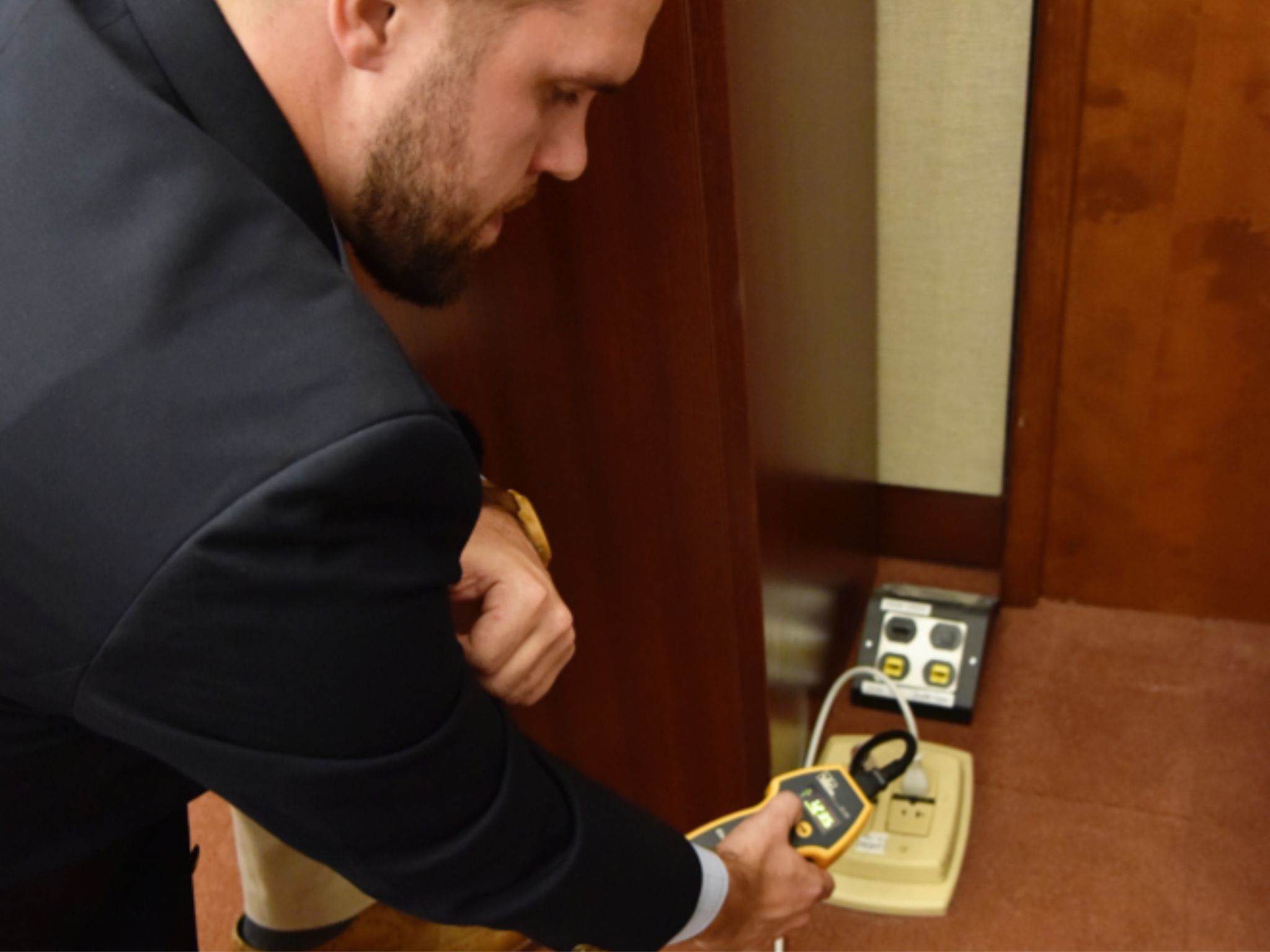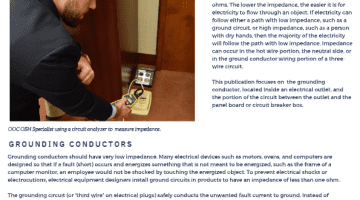Impedance, in very simple terms, is resistance occurring in AC (as opposed to DC) electrical circuits. The degree of resistance is measured in units called ohms. The lower the impedance, the easier it is for electricity to flow through an object. If electricity can follow either a path with low impedance, such as a ground circuit, or high impedance, such as a person with dry hands, then the majority of the electricity will follow the path with low impedance. Impedance can occur in the hot wire portion, the neutral side, or in the ground conductor wiring portion of a threewire circuit.
This publication focuses on the grounding conductor, located inside an electrical outlet, and the portion of the circuit between the outlet and the panel board or circuit breaker box.
GROUNDING CONDUCTORS
Grounding conductors should have very low impedance. Many electrical devices such as motors, ovens, and computers are designed so that if a fault (short) occurs and energizes something that is not meant to be energized, such as the frame of a computer monitor, an employee would not be shocked by touching the energized object. To prevent electrical shocks or electrocutions, electrical equipment designers install ground circuits in products to have an impedance of less than one ohm.
The grounding circuit (or “third wire” on electrical plugs) safely conducts the unwanted fault current to ground. Instead of shocking the person touching the energized object, most of the current follows the low resistance or impedance path to ground.
THE PATH OF LEAST RESISTANCE
The cliché about electricity following the path of least resistance is incorrect. Electricity will follow all paths back to the grounded source, but it will follow paths proportionally according to the conductivity of each path. When wall outlet ground circuits have very low impedance compared to a person in contact with an energized object, they can safely convey high current away from a faulty electrical device and trip the the ground fault circuit interrupter (GFCI) circuit breaker or fuse in most instances.

